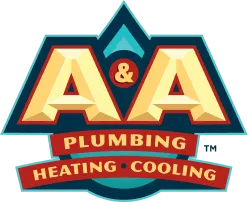You may think there isn’t much to understanding plumbing waste disposal. You flush the toilet, and the waste is gone, right? But do you have any idea where your plumbing waste goes from there? Truthfully, most people prefer not to think about where their waste goes after being flushed away.
The journey plumbing waste takes is actually quite impressive! Read on to learn more of what the sewer and drain cleaning experts at A & A Plumbing have learned about waste disposal in different kinds of plumbing systems.
Houses With Septic Tanks
Homes in rural areas that are not connected to a public sewer system often use septic tanks as their means of disposing of plumbing waste. Septic tank systems usually consist of the tank itself, and a drain field.
First, wastewater flows into the tank from the home’s drain pipe, and the tank holds the water until all of the solid waste has sunk to the bottom, forming “sludge” and organic waste like grease and oil has floated to the top, forming a layer of “scum.”
Next, the effluent- or leftover wastewater that is neither sludge nor scum- flows out to the drain field, where it will filter through the soil until it becomes groundwater. As it passes through the dirt, viruses, nutrients, and coliform bacteria are removed.
Public Sewer System
In more urban areas, most homes are connected with sewer lines where water flows through main sewer pipes to a single water treatment plant. At the plant, wastewater will go through one, two, or even three stages of treatment, depending on the city.
The primary treatment process is very similar to a septic system. The solid waste is separated from the wastewater and collected for disposal. In secondary treatment, wastewater flows into an aeration tank. Here oxygen-breathing bacteria eat all the organic material and nutrients they can from the water.
The water then flows into a settling tank, where the bacteria is settled out. At this point, the water has lost approximately 90% of bacteria and viruses it once had. Finally, in tertiary treatment chemicals like chlorine are added to kill any remaining bacteria or minerals, and the water can then be discharged for public use again.
Waste Disposal
Cesspools are another common waste disposal method that works similarly to septic tanks. In fact, they are sometimes used alongside septic tanks to prevent overflow. The biggest difference between a septic tank and a cesspool is that the wastewater in a cesspool percolates through the concrete or brick walls directly into the soil instead of flowing into a drain field.
There are also sewage treatment plants that aerate the wastewater electrically with rotating discs, air blowers, or pumps. Most public sewage systems also use what are called gravity drains to move wastewater to the plant. Gravity drains use downward sloping pipes to allow the waste to flow towards the plant, occasionally employing lift and pumping stations to lift the waste into another pipe, or up to the plant.
If all this new information has opened your eyes and has you thinking your home’s waste treatment, then give A & A Plumbing a call today at (210) 566-2665 for plumbing services in the San Antonio area!
